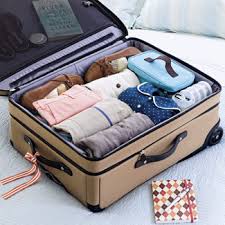STEP ONE: DOWNSIZE
Now is the time to be selective. Plan to bring only the items you really want in your new space.
STEP TWO: PACK
Packing Paper vs. Bubble Wrap
Packing Boxes vs. Plastic Tubs:
Packing boxes:
Plastic tubs:
Best Labeling Practices:
STEP THREE: UNPACK
Click on the title above to learn more about the featured author.
At the end of the school year, there are three things that are a given.
Here’s help for all of those papers:
Just because your kid’s papers come home in one bag doesn’t mean there is just one single type of paper. There are a few different types of papers, and each one needs you to do something different to them. Let’s break it down.
Can you think of any other types of paper that you need to keep?
Don’t bother keeping school papers to pass down to the next kid. When their time comes, their teachers will have their own way of presenting a learning concept.
I recommend keeping recent school directories with #2 above and older school directories in #3 as keepsake items or not at all.
The half-pile I mentioned? I also end up with summer workbooks or skills packets. These might be things you buy or things that the teachers send home. They might include summer reading lists and reading tracking charts. Do yourself the favor of telling your kiddos about them, setting goals, and letting them work through them at a regular pace during the summer. We’ve had a routine of doing a couple of workbook pages each day. This year, we’re giving our kids a weekly packet to complete at their own pace. Either way, I’m grateful for the unused learning resources that the teachers sent home.
How long does it take to get through all the school paperwork? Realistically, it can take less than an hour per kid to sort into these categories and purge. It might take up to another hour to select and digitize the artwork that you’ve saved all year. If it takes much more time, you might be overthinking it. Your child — even elementary school children — can help you with this task. They’ll love telling you about all the amazing stuff they do at school.
If you haven’t unpacked that backpack yet, now is the time to dive in, sort the papers into the categories above, and reclaim your kitchen counter from school papers that have built up all year long.
Click on the title above to learn more about the featured author.
 When was the last time you took everything out of the trunk and off of the floor of your car and really explored what is hanging out in there? Maybe you have some store returns to make that happen to be intermixed with fallen French fries, sticky soda bottles and stinky gym shoes…ick. It sounds like a scenario for those Febreze Car Fresheners!
When was the last time you took everything out of the trunk and off of the floor of your car and really explored what is hanging out in there? Maybe you have some store returns to make that happen to be intermixed with fallen French fries, sticky soda bottles and stinky gym shoes…ick. It sounds like a scenario for those Febreze Car Fresheners!
On the next nice day when you can dedicate a few hours, head out to your car and follow these simple steps.
1) Remove EVERYTHING – Yes, I said everything! First, take out the bigger items from the floor and then the stuff from your glove compartment, center console, door pockets and trunk. Don’t forget to look in all those other nifty hidden compartments, as well. For now, keep these items in neat (or as neat as possible) piles in your garage, on the patio or in shopping bags.
2) Clean – Clean your interior windows including the front windshield, the rear window and the gauges. Next, dust and clean your dashboard. Finally, vacuum the floors and seats. If you haven’t done this process in a while, you may just prefer to head to the car wash and let them take care of it for you. A good car wash may be something worthwhile to get rid of that pesky pollen…achoo!
3) Trash/Recycle – Get a trash bag as well as another bag for recycling. Toss any items that are trash, like those fries! Recycle any maps or papers that aren’t needed, like expired car registration or insurance documents, soda cans and water bottles.
4) Sort – Go through the rest of the items and decide where they need to go, whether it is back in the car or into your house.
5) Organize – Keep some fabric storage bins with handles in your trunk and on the backseat. They are inexpensive and can surprisingly hold a lot. Five bins should be enough; you don’t want to fill up your entire car with them.
6) Maintain – Whenever you stop for gas, pop out the trash bag and toss it. Save the recycling items to take home if you don’t see a recycling bin. Keep some additional plastic grocery bags folded flat on the bottom of each bin.
7) Rejoice! – Look inside your newly cleaned car and get ready for those road trips. Then take a whiff. If it still stinks, quickly proceed to the nearest store and buy yourself an air freshener!
Happy travels wherever you are headed, near or far!
Click on the title above to learn more about the featured author.
 I love to travel, but I don’t like lugging a heavy suitcase. As a result, I’ve learned to streamline my clothing selections. Here are some tips on how to do more with less so you don’t exceed the 50-pound limit or tire yourself out unnecessarily:
I love to travel, but I don’t like lugging a heavy suitcase. As a result, I’ve learned to streamline my clothing selections. Here are some tips on how to do more with less so you don’t exceed the 50-pound limit or tire yourself out unnecessarily:
Pick a color scheme
To minimize the amount of clothing, shoes and accessories, pick a color scheme of one or two colors. One of my favorites is black & tan.
Select neutral clothes and interesting accessories
Many neutral clothing items can be dressed up or down — depending on what is partnered with them. For example, a simple black sun dress can be worn with flip-flops during the day, then dressed up with a summer scarf, kitten heels and sparkly earrings for a night on the town.
Do the math
Calculate how many outfits you’ll need for the number of days of travel. How many items can you wear more than once, such as jeans or dress clothes? For extended trips, are you willing to do hand washing or utilize the hotel’s laundry service?
What about shoes? Try to limit them to three pairs.
Make a list, or better yet, a checklist
Once you’ve done the math, make a list of what you are considering. Create a checklist in Word, Excel or on paper. List the basics, then add selections for summer, winter, business or an extended trip. It will save you time and reduce angst!
Confirm the weather
What will the range of temperatures be at your destination? Closer to the date of travel, check the ten-day forecast. What if it rains unexpectedly; is cold or hot? Add raincoats, umbrellas, sweaters, shorts, etc. and remember that LAYERING is in order for chillier weather.
Limit your selection to your calculations
Many people bring a number of options for each day so they can wear what they’re in the mood for. Not! If you want to streamline your packing, don’t let your mood come into play.

Select an outfit for each day, less what you’ll repeat, plus what’s needed for unexpected weather. Add an extra set of undies, socks and top in case of an unexpected delay.
When in doubt …. leave it out!
Click on the title above to learn more about the featured author.
Do you ever wonder how Professional Organizers get their training?
There are quite a variety of ways – books, webinars offered by NAPO (The National Association of Professional Organizers) and other professional organizations, local NAPO chapter and virtual monthly meetings, full and half-day training sessions and the annual NAPO conference. The latter is the most rewarding way and the one I’d like to share with you.
In May, one third of our Greater Philadelphia Chapter (approximately 25 of 75 members) went to Atlanta to spend three and a half days learning and networking. The majority of the 500 conference attendees were from the US, but there were organizers from all over the world – Canada, Brazil, Guatemala, the Netherlands, Belgium, England, Japan and Australia.
Ever wonder what a NAPO conference is like?
The annual conference begins with an Expo, where businesses and individuals share their products and services to help us help our clients. Big names such as Target, the Container Store, 1-800-GotJunk and Smead were there, as well as solo-preneurs such as authors and coaches. We get a chance to have in-depth conversations, which is beneficial to both parties.
The conference committees bring in great keynote speakers and this year’s speaker, Scott Greenberg, was no exception. Scott discussed the importance of mindset – the way we manage thoughts and emotions. You know how we all have that inner critic? If we declutter our minds and stop hoarding negative thoughts and memories, we can focus better on giving to others and being more courageous and grateful. One of my favorite lines from Scott was, “Don’t spend your life proving yourself, spend your life improving yourself.”
You presume we have break-out sessions, right?
Of course. At each of the six sessions there are five options. The breadth of the education is impressive, as is the expertise of the speakers. I could write pages on the sessions but since “less is more,” I’ll merely list the tracks and specific topics:
In addition to these 30 options, there was an Ask-the-Organizer panel, which is one of my favorite offerings. Five organizers are interviewed by a very personable moderator about various aspects of being an organizer. I love this not only because I learn a lot, but I see common threads amongst all of us, yet we all have the freedom to manage our businesses as we see fit.
Do you think we have fun after the sessions?
Of course! We either meet in the hotel’s restaurant/bar or we check out the city’s offerings. This year, NAPO’s president, Ellen Faye (a member of our Philly chapter!), hosted a great party where we ate, danced, and sang some karaoke.
With all of these offerings do you wonder what was the highlight of the conference?
We were asked this in one of our sessions and the vast majority replied ‘networking’ or ‘connection.’ When organizers are together we say: “I’m with my tribe.” It’s true — and I’m proud and delighted to be part of a group of people who care so passionately about helping people make their lives work better. We view ourselves not as competitors but as collaborators and together we are truly better.
Being a “baby boomer” with aging parents (we don’t use the “O” word) is a challenge. Someone has to manage their finances, medical care, etc., in addition to managing their own lives. Some people transition into this next phase easily, while others may struggle. My mother-in-law blossomed when she moved into a continuing care community. All the people, the activities, and the fine meals prepared there… visiting her seemed like geriatric camp.
The beginning
The ideal situation is when parents make the decision to plan ahead, before something “happens.” They will have a say on how things will unfold and won’t be feeling left stuck. Communication is key. Remember, this is a huge life change for them so check your ego at the door. If you can’t communicate, get a mediator to help you through the process.
What if they don’t want to move?
The longer our parents wait or the more they postpone the process, the harder it will be. Period. As children, we can be a blessing and a curse. They want us there, but they don’t want our opinions. Personally, I was not invited to help my mother when she downsized. It was emotional and difficult to understand. I, the expert, was banned from doing what I do best.
Avoid crisis
Don’t wait for a crisis to happen; being prepared for every scenario is key. Think about the worst case and consider all the events that will follow: transportation, after care, meal preparation, hygiene and so on. These are all possible circumstances that will need to be addressed after a crisis. Once you are in the crisis, things move very quickly. This can be very disorienting and stressful for your parents (and you too).
Where to go?
Transition is hard for everyone. Finding the right place will give your loved ones peace of mind and security. A member of my family couldn’t return home and moved to a facility that was chosen by their kids. It was ok, but the quality of care quickly declined. This resulted in moving an 85-year-old with Parkinson’s twice within a few years. Very disorienting.
How a facility is managed can tell you a lot. For my mother, we opted for a place that is managed by the community or a residents board of directors.
What about the stuff? Where do you start with a lifetime of possessions?
Start as soon as possible. What does that mean? As soon as your parents start warming up to the idea of moving, talking about moving, or looking at new places, begin to sort.
Implement deadlines. Set a goal of when decisions need to be made, and if the deadline passes, the stuff goes into the trash or a donation bin. Start in the attic, basement or garage. The big things are easy (we call this cherry picking)— extra furniture, appliances, or things they no longer use. Then shift into the smaller items, like things they will no longer need in their new place: bikes, shovels, tools, etc., can all go…
Excess items are easy to let go. In a small space, you will only need so many household goods. Entertainment items can be paired down to just the basics.
Kids, our parents are not responsible for our stuff from high school and college. Help them make the decision to let go of your old things.
Emotional items are more difficult. It’s ok to leave those to the end. Pick your battles and make realistic decisions. Small stuff is good, but the bigger stuff might be more difficult. Find a balance.
To store or not to store?
The storage decision is hard. Be realistic on what you need to store. I have a client who has spent $50K on storage since her dad died. I am sure that what is in there is not worth the storage cost.
The only time I recommend storage is if there is no way you can get your parents to change their minds. Have the hard conversation, but know that sometimes it’s not worth the battle.
If it’s a non-negotiable decision, respect your parent’s choice. It’s okay to revisit the conversation later. Suggest going through the unit in six months. They might feel better about making decisions once they have settled into the new space and relaxed.
My number one word of wisdom is— do not bring everything to your house to sort! Too many people have called me with a basement or a garage full of their parent’s things. My aunt died thirteen years ago, at the last minute we packed a couple of boxes to sort through at my mother’s house… they are still there.
This is a difficult time for everyone. We need to drive the process, learn to listen and be supportive while maintaining a good relationship with our parents.
Click on the title above to learn more about the featured author.